06 Interview Special: Jan McHugh
Reflections on Joseph McHugh, Alice & Music, with his wife, Jan.
In last week’s post we explored the trippy world of 1960s psychedelia, Jefferson Airplane’s 1967 song ‘White Rabbit’ — an anthem for a subculture looking to broaden its consciousness — and the adoption of Alice (and Beatles) imagery, occasionally combined, in the era’s iconic and diverse ‘headshop posters’.
It was East Totem West that created the best known posters of all — from White Rabbit to Cheshire Cat — and its founder Joseph McHugh created both of these (and more). While McHugh passed away in 2022, his second wife, Jan McHugh, was kind enough to agree to an interview. So in September 2023 Jan and I chatted briefly about Joe, his work, his love of the Beatles and the influence of Alice.
It was revealing to hear about McHugh’s feeling of ambiguity about what was real, what was tripping, and what was illusion, and the idea that ‘nothing is real’, a lovely call back to Lennon’s famous line we discussed in Episode 3: Nothing is Real.
So without further ado, onto the interview…
NICK
Tell me about Joe. How did you meet? How do you remember him? As an artist, husband, man?
JAN
You know all the things they say about artists? For example…they never know what the time is, and they never know what the date is, what the year is….? He was just like that. He was very, very spiritual. He was brought up as a Catholic, but wasn’t ‘adherent’… he was more in the Buddhist area.
He was also very quiet – he didn’t say much. But he was very clever – it was useless arguing with him. We were married for 26 years. He worked almost every day. Writing, but mostly drawing and painting. We have them all over the house.
NICK
Speaking of the artworks, I’m especially curious about the Lewis Carroll-inspired posters. Do you know how they came into being? Why Lewis Carroll?
JAN
I think the reason that the whole white rabbit thing came about, was a combination of already having that “take this pill and you’ll be big, take this pill and you’ll be small” idea, which was very relevant to the drugs he was doing at the time (which was LSD). I think that has a huge part to play in his work.
But also, have a look at this print that’s hanging in our house. It was done by an artist called Bo. He was a very good friend of Joe’s. He was even out of the country and came back for Joe’s memorial…
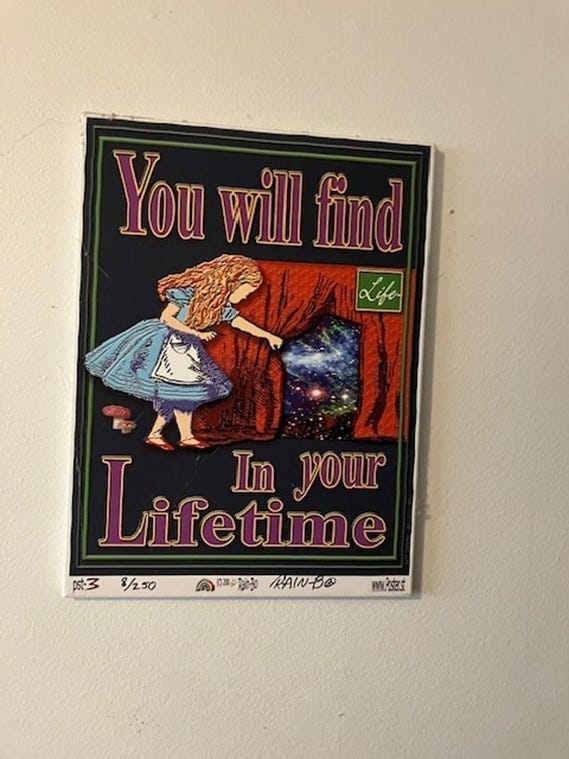
You don’t really know what you’re seeing. You think it’s one thing, and really it’s another thing. Just pull back the curtain and that’s where you’re trying to wash out the craziness, or the knots or whatever.
Alice opened up his way of thinking: nothing is real… Nothing that you think is real is actually real. ‘Behind the curtain’ was one of his things. The idea that there’s so much more to this than you may ever know. Just give it a shot.
That was his Alice thing, really. That and the song by Jefferson Airplane.
NICK
I read, in Bisbort’s book [The White Rabbit and Other Delights: East Totem West : A Hippie Company, 1967-1969] that the idea preceded Jefferson Airplane’s White Rabbit, but as it came out later is the title “keep your head” not “feed your head” a comment? If so what does it mean?
JAN
The song came out at about the same time. But on his [poster] it says “KEEP YOUR HEAD”. In the song it’s “FEED YOUR HEAD”. I cannot tell you how many people have called me arguing about this.
He may have been thinking about the Red Queen – “off with your head”… and also intrinsically the thing about LSD… in his opinion, you were keeping your head, it was more real than what you think of as reality. To him it was never really tripping, it was being. Our “real world” is what’s kind of tripping to him. He lived that idea right to the end. He stopped taking LSD and hard drugs early on. By the late 90s he only drank Bourbon and smoked pot (a lot of both by the way).
This makes me think of one of the other posters I wanted to ask about. It’s the one called Turn On Your Mind (by Wilfred Sätty). I’m assuming it’s a reference to the Beatles with the opening line “turn off your mind”.
Almost everybody is no longer with us, so it’s hard to know. He was an interesting guy too… but yes, I think it was a reference to Tomorrow Never Knows…
NICK
Let’s talk about The Beatles. Were there – do you know – any overt connections meetings, exchanges, correspondence?
There were many bands he was taken by. The Beatles was one. The Grateful Dead was another. And Joe knew lots of rock stars in Mill Valley, in Marin County. The Grateful Dead lived there and he used to run into them all the time. Also Led Zeppelin, Janis Joplin…. The other thing he really liked was Indian music… and we have a lot of Palo de Santo incense (which I guess is ‘saint’s wood’ – it’s a very interesting one).
But The Beatles were very prominent in his tastes. I think it was the combo. The words… and their music can be extremely philosophical, airy-fairy, and ‘round the corner’. For example, when I was at Ringo’s concert… they did Yellow Submarine… is it for children / not for children? It’s really out of this world.
That was very much like Joe. He was terribly serious and philosophical, but also “right off the top”. Just do it. You could be anywhere doing anything. “What do you think of this?”. He’d say “I’m not thinking, I’m just reacting”… it’s not very logical.
He was very spiritual, and I know it sounds nutty, but he almost wasn’t of this world. At one point he was unwell, we ended up in the hospital. The next morning the doctor said “I think your husband has had a stroke”. I rushed there and said ‘why do you think that?’. He didn’t know what month or day or year it was, they told me, but he never knows those things…
To him those things weren’t relevant.
‘They say it’s Tuesday. Good for them. It’s not Tuesday everywhere’.
He could have been alive at any time since the year 1,000 and he would have been exactly the same.
One of the other things is that he was also a psychologist. He got drafted into the army, and became an army shrink. Took his brother to RISDI, a very famous art school, and while they were there, one of his pieces was in there. The man said “I love it” and he said “that’s my brother”. He was enrolled on the spot.
NICK
I’m curious about his career after East Totem West and the 60s / early 70s. What happened next?
JAN
His work changed quite radically. I’m sending you one of me.
He stopped doing the colour posters in 1971. “All the tired horses…”… He was just really tired. I think he’d had it. And he divorced his wife, Irene. She was an artist also…
Thanks for reading to the end.
And see you all next week where we’ll be turning our attention back to the Beatles songs and taking a deep dive into the way their studio craft and innovation approach turns a very sonic book — based on musical language, songs, and creative imagery —into Studio Wonderland.


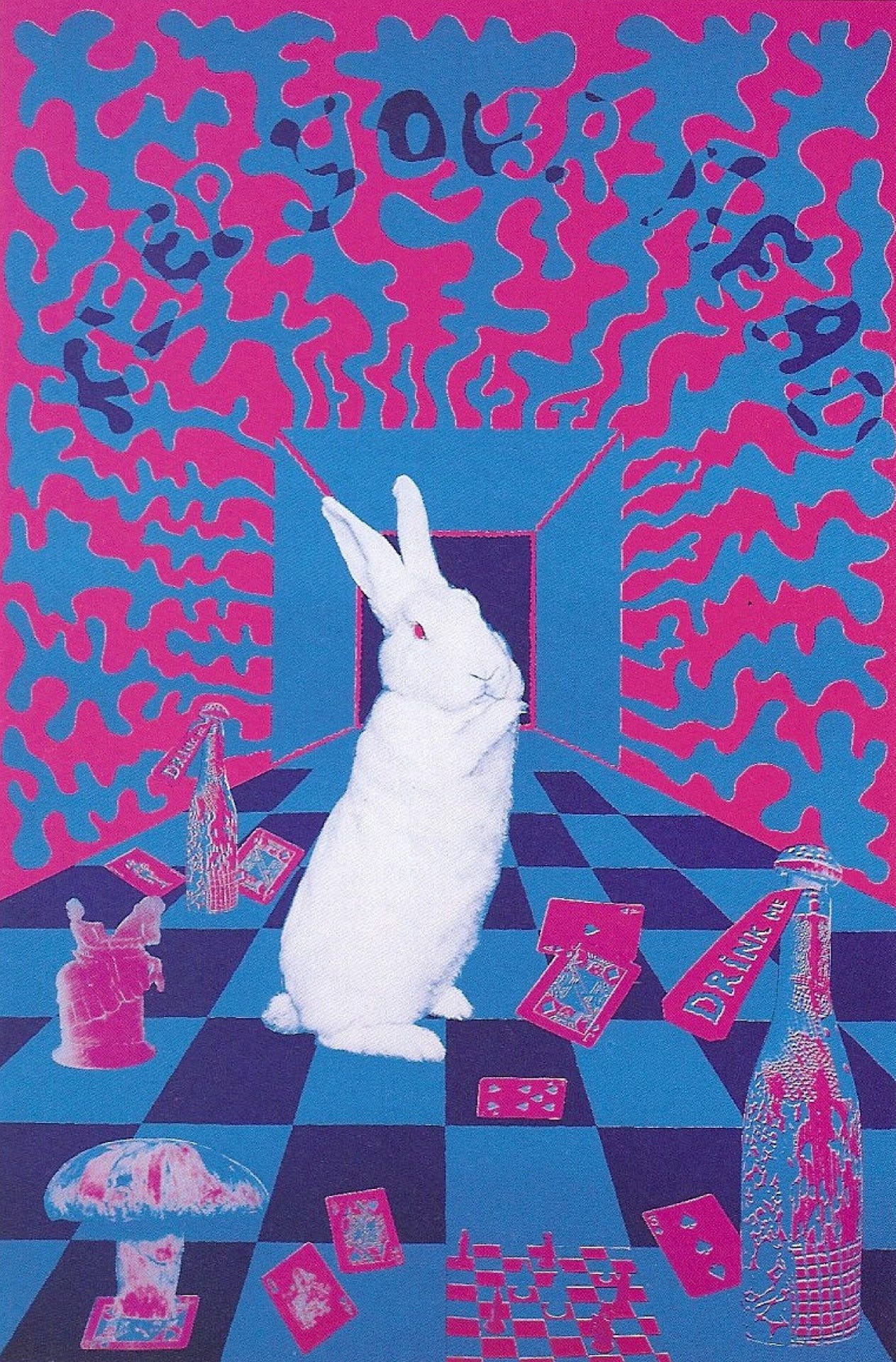
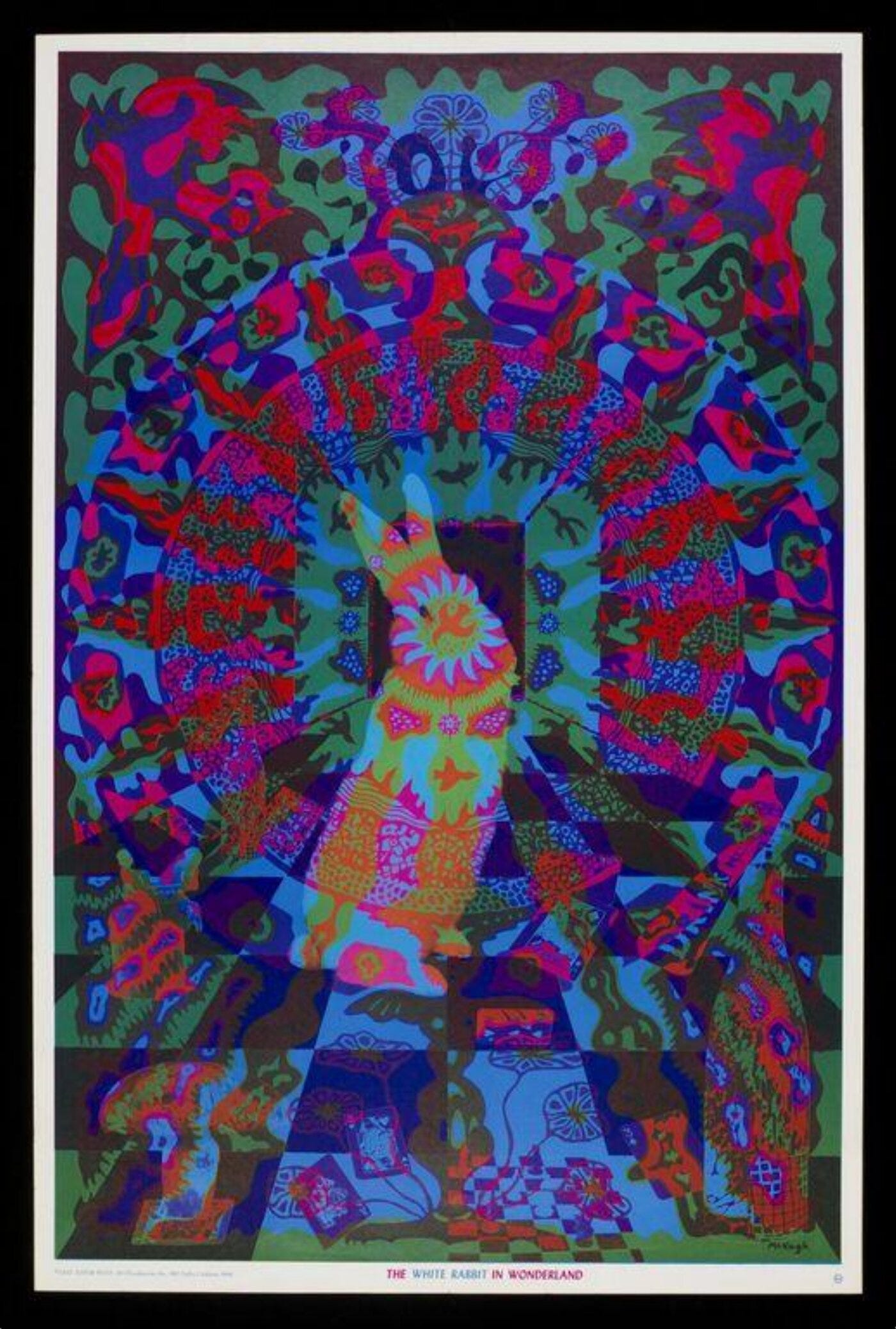
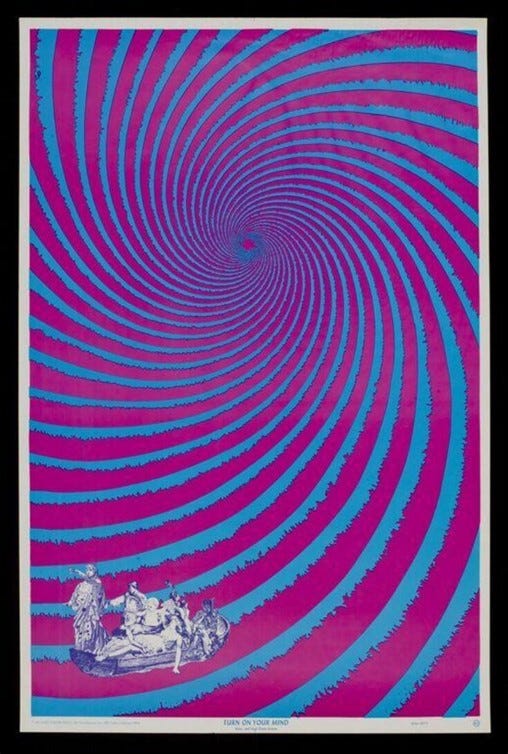
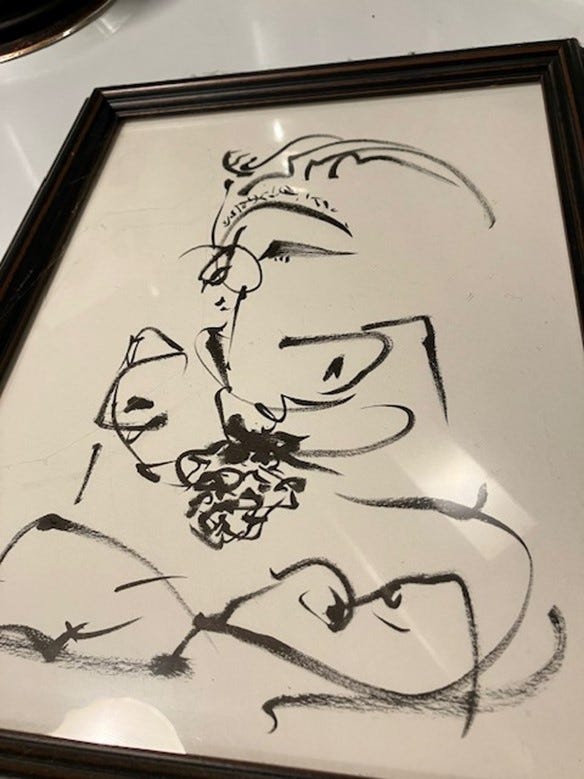

great interview!
Hey Nick!
Really excited I found your interview here with Jan. I am curious about the "All the Tired Horses" poster. It felt unclear in Jan's answer, but was that his last color poster for East Totem West? I recently came across a photo of the poster taped up in an R&R center in Vietnam, around 1970-71.